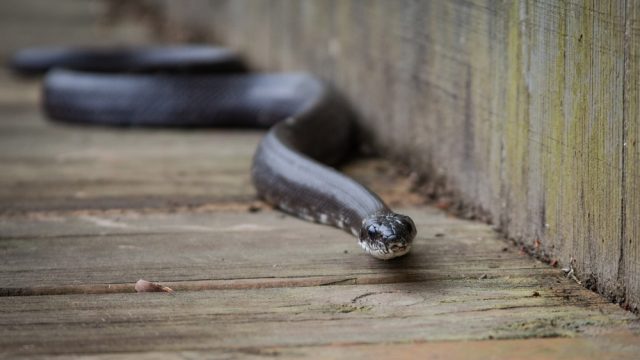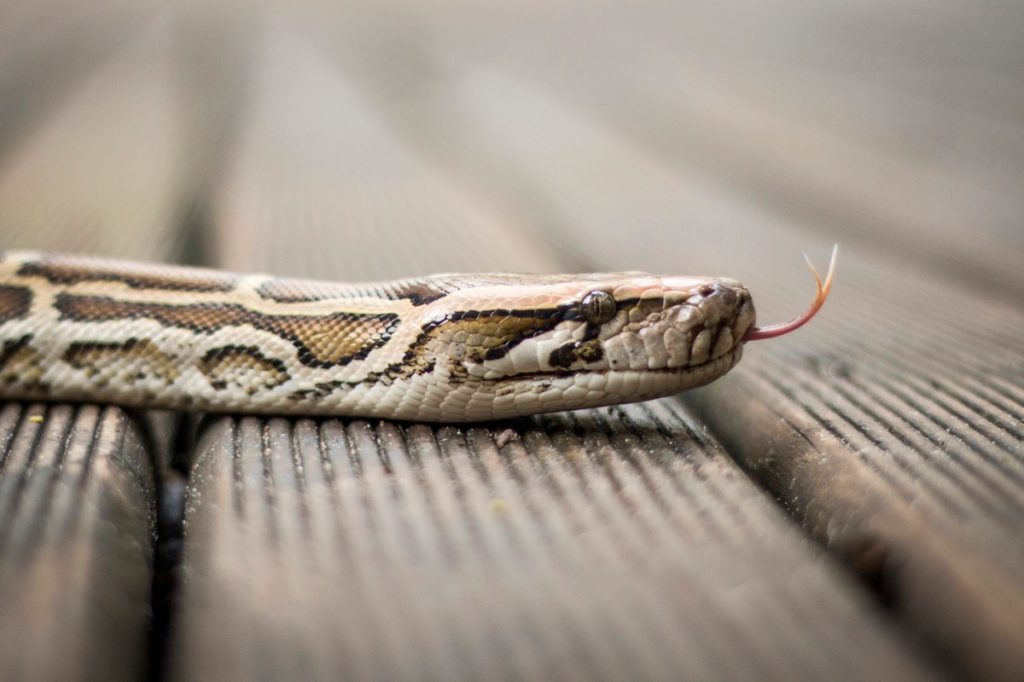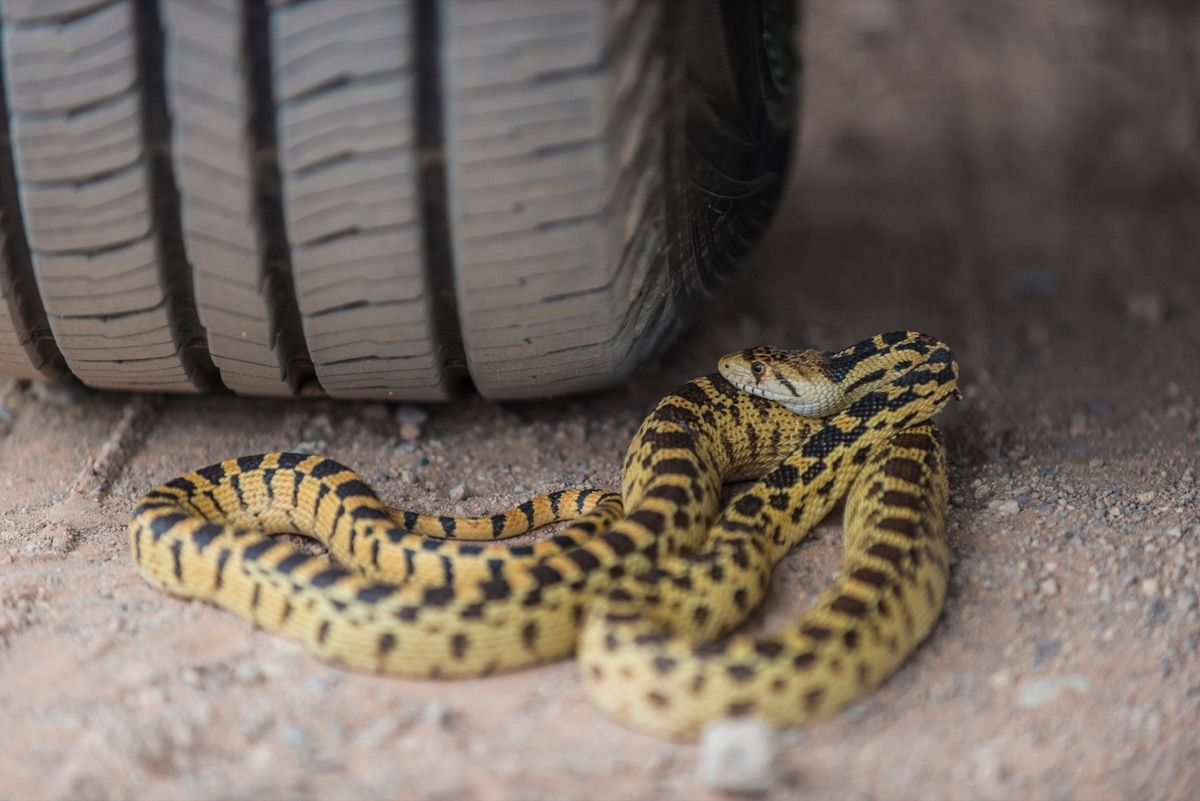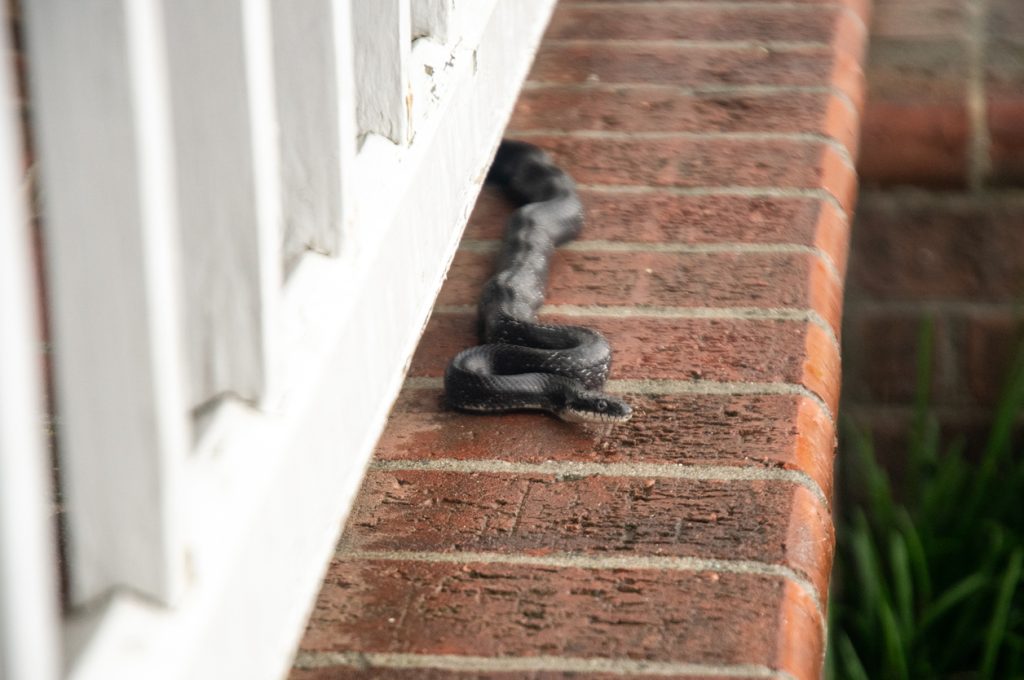Snakes Could Be Hiding Inside Your Home, Expert Warns—Here’s Where to Look First

Spending more time in your yard enjoying the summer weather can make it suddenly clear just how common it is to see snakes on your property. Fortunately, most species you’re likely to come across are relatively safe and non-venomous, and all play an essential part in the ecosystem. But there’s always the chance one will make its way closer to your actual living space and get all the way indoors. And now, experts are warning that certain conditions might make it more likely that snakes could be hiding inside your home. Read on to find out where you should look first for any possible intruders and what you can do to prevent unexpected visitors.
RELATED: 4 Scents That Attract Snakes to Your Yard, Experts Say.
Experts warn snakes could be hiding inside your home as they seek out more comfortable conditions.

Your home is meant to be a place where you feel both emotionally and physically comfortable. This can become even more clear during the extremes of the seasons when our heating or cooling systems provide relief from the harsh elements outdoors. But humans aren’t the only ones who appreciate a cozy temperature: Experts warn that snakes will also make moves to get indoors, including when they’re trying to escape hot summer weather and the sun’s rays.
“When it gets really hot in the heat of the day just like us, they seek shade, which could be inside homes,” Bruce Ireland, a San Diego-based reptile removal expert known as The Snake Wrangler, told local Fox affiliate KSWB.
Other summer lawn chores could also leave your property more enticing to the reptiles, making them more likely to edge their way indoors. “They’re seeking out places that are cooler … or that may have water, for instance,” Daren Riedle, wildlife diversity coordinator with the Kansas Department of Wildlife and Parks, told The Wichita Eagle. “So if you’re watering a garden or watering your lawn, they could come in in those situations.”
RELATED: Giraffe-Sized Python Found in the U.S.—Why They’re Unstoppable.
Many snakes make their way indoors through some fairly obvious entry points.

While it’s possible for snakes to make their way indoors chasing a meal or looking to get cozy when temperatures drop, they can also sneakily get inside using some more obvious passages. “A lot of homes don’t have air conditioning, so their only option is to leave doors and windows open, and snakes aren’t necessarily looking to come into homes; they are looking for shade and shelter,” Ireland told KSWB.
Because of this, experts caution that checking the areas around your front door can be most important. This includes the relatively busy areas both inside the threshold and outdoors on your front porch, where there should be coverage from the sun.
“It’s important to understand that copperheads aren’t attracted to people or porches, but they may be attracted to nearby cover or food,” Falyn Owens, wildlife biologist for the North Carolina Wildlife Resources Commission, recently told The News & Observer. “Close encounters between people and copperheads almost always involve the person approaching the copperhead, not the other way around.”
Keeping your eyes peeled for potential snakes in and around your entryways can be especially important if you have pets or young children. In May, a 4-year-old boy on a camping trip in Highlands, North Carolina, was bitten by a copperhead snake that had been hiding underneath patio furniture. After receiving 10 vials of antivenom treatment, doctors still decided to fly the injured child by helicopter to another hospital where his condition finally stabilized.
RELATED: 8 Things in Your Yard That Are Attracting Snakes to Your Home.
There’s another area of your home that’s particularly risky for snakes.

Even if you’re keeping your doors and windows closed tight, there’s still one other common place where snakes seek refuge. Sheds and garages often provide the cooler temperatures, shade, and hiding spaces that the reptiles crave during hot weather. And while you might not have your home’s front or back doors ajar, the snakes often take advantage of the wide open entrance available to them where you park your car.
Unfortunately, an incident in June showed just how this could create a dangerous situation when a 14-year-old North Carolina boy was bitten by a copperhead in his garage after playing basketball. The snake managed to sink its fangs between the boy’s toes, resulting in a trip to the hospital that included a pricey antivenom treatment.
“I continuously tell my children—and I have six—they need to close the garage door because, I say, snakes will want to go inside,” Joel Levy, the boy’s father, told local FOX affiliate WJZY.
RELATED: For more up-to-date information, sign up for our daily newsletter.
Here’s what you should do if you find a snake in your home.

Of course, experts say being proactive in keeping a snake out of your home is the best way to avoid any unwanted surprises. That means besides ensuring doors and windows are kept shut, you should also clear up any rodent issues in your yard, garage, or basement and regularly inspect for cracks, holes, or other entry points they could use to get inside. But if you do come across a small snake indoors, it’s best to remain calm.
“It can be a shock to see one in your house, the big thing is … don’t overreact and make yourself trip or fall down or anything like that,” Riedle told The Wichita Eagle, adding that they could be swept into a trash can or bucket so they can be released back outside. “For them to get into a house …. is a one-time deal, especially if you harass them or stress them out like you would if you’re sweeping them into a trash can. They’re not likely to come back [inside] in most cases unless you have something really attractive to them.”
If you’re still concerned about acting on your own or suspect the snake might be dangerous, don’t hesitate to call an expert to handle the situation. And if you notice a snake just outside, chances are leaving it alone will get it to move along soon.
“Just walk around it, just give it space; snakes don’t want anything to do with humans typically. The only time they are going to be defensive typically is if you choose to engage that snake,” Ireland told KSWB. “I would just say leave it alone.”